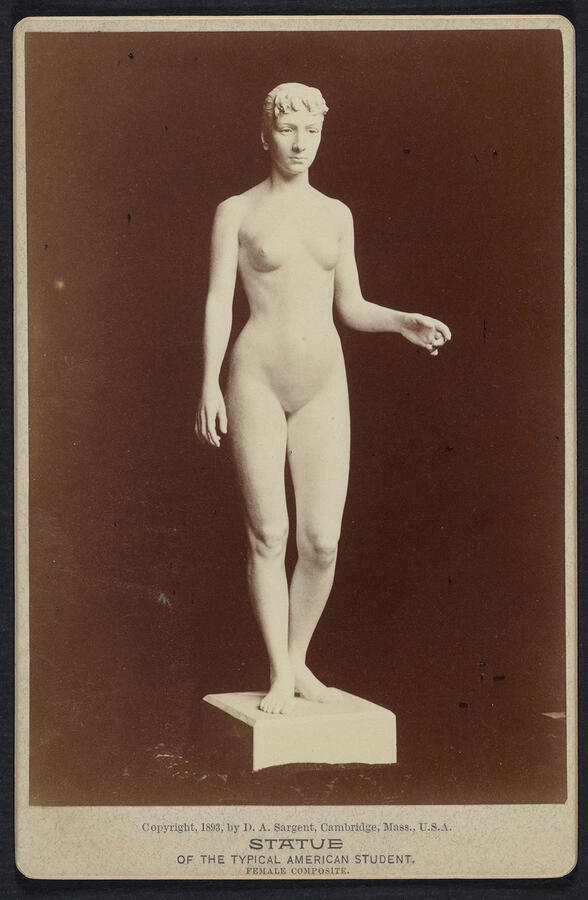Measurements were fundamental to Sargent’s standards of physical culture. Statistics were regularly published and exhibited to prove the health of college women. Bryn Mawr assessed students regularly, with as many as fifty measurements taken at a time. The results were aggregated to determine norms and averages.
When Sargent displayed a nude sculpture depicting the purportedly average female college student at the 1893 World’s Fair, many admired the proportions of the sculpture. Measurements of college student’s all over the country were synthesized to create a composite figure, but these statistics were skewed by the homogeneity of the typically white, socially and economically privileged college student population. In the late nineteenth century, white bodies were often normalized and valorized in discussions of health and beauty, while non-white bodies were pathologized or considered aesthetically inferior.
Sargent associated health with aesthetic appeal as much as fitness. This statue resembles Greco-Roman sculptures of the kind that decorated the interior of Taylor Hall, projecting an ideal form with which Bryn Mawr students were encouraged to identify.

“The Proportions of the Greek statues are still taken as standards of beauty, and I am sure the women of today [in 1910] are becoming more like them…..Was the typical women that I modeled for him [Dr. Sargent, in 1893] beautiful?….I cannot say that she was…The measurements were taken from college students, and some of the many individual models were what they call grinds….I should say that the model which Dr. Sargent found to be typical fifteen years ago was undeveloped.”
Theodora Alice Ruggles Kitson as quoted in “Modern Women Getting Near the Perfect Figure,” New York Times, December 4, 1910.
Sargent commissioned Kitson and her teacher (later husband), Henry Hudson Kitson, to sculpt the statues of an ideal man and woman displayed at the 1893 World’s Fair. The sculptures were based on composite photographs and statistics of students from Harvard University, Radcliffe College, and other elite colleges and universities, including Bryn Mawr.
Are there ways that health and well being on campus today are premised on assumptions of biological and social homogeneity? How does our community define healthy bodies and minds today?
